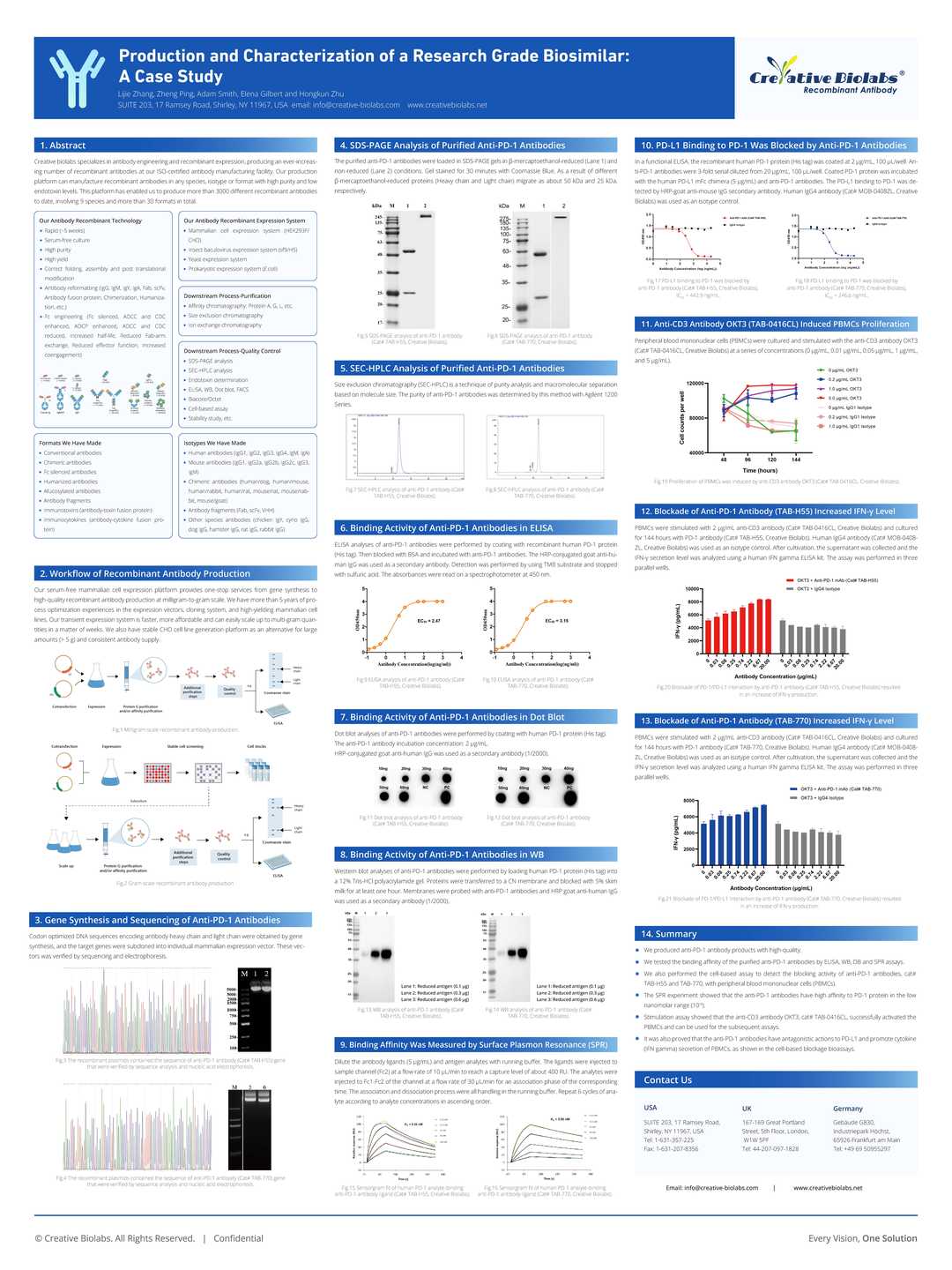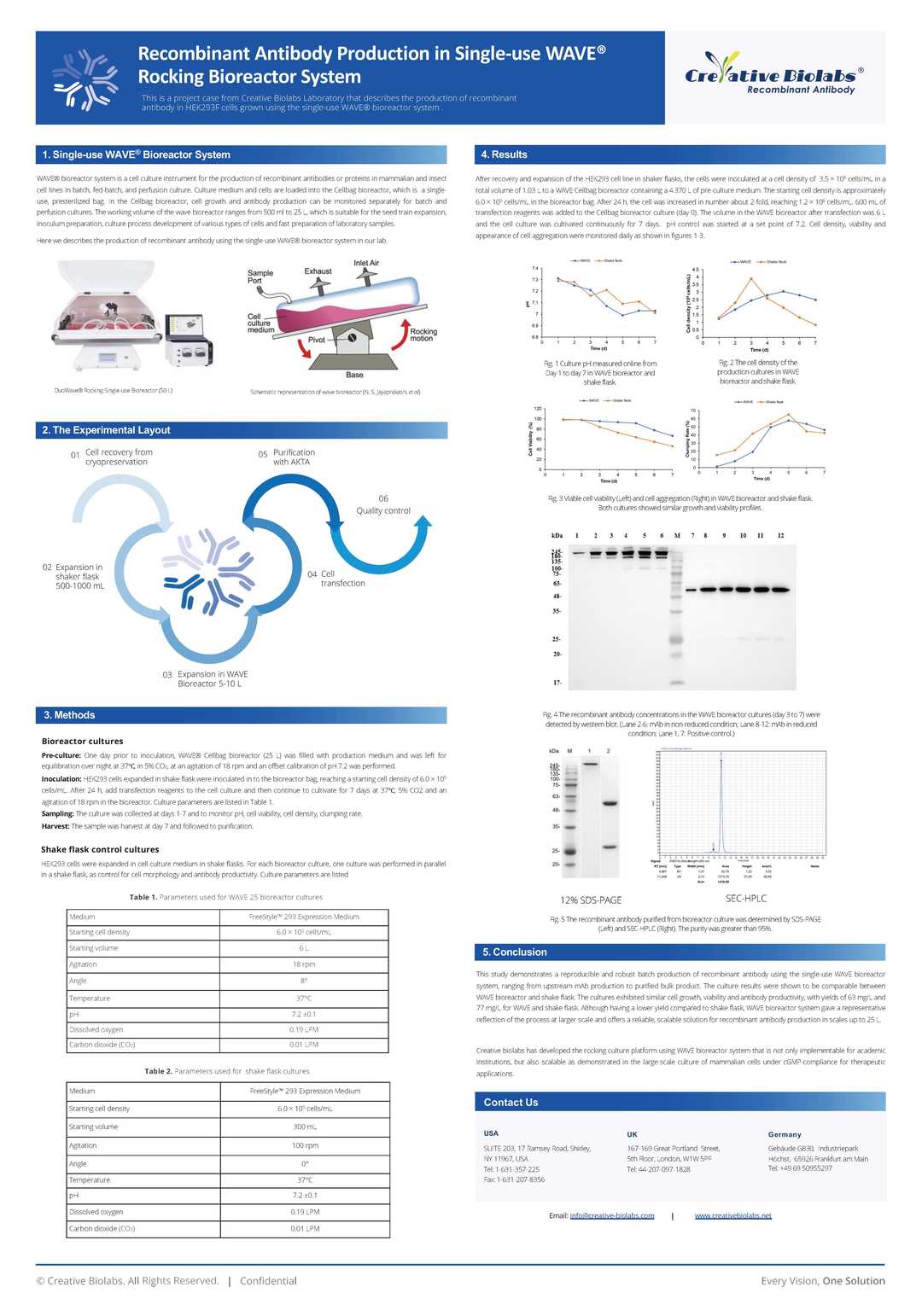Mouse Anti-EBV gH/gL Recombinant Antibody (clone CL59)
CAT#: PABC-523
This product is a Mouse antibody that recognizes EBV gH/gL. CL59 can block membrane fusion with both B cells and epithelial cells. CL59 binds an epitope in gH D-IV, proximal to the viral membrane and distant from known receptor binding sites, indicating the functional importance of this domain in fusion activation.







Specifications
- Host Species
- Mouse
- Type
- Mouse IgG1
- Specificity
- EBV gH/gL
- Species Reactivity
- EBV
- Clone
- CL59
- Applications
- ELISA, FC, Neut, Inhib
Product Property
- Purification
- Protein A/G Purified
- Purity
- >95% as determined by SDS-PAGE and HPLC analysis
- Concentration
- See the COA
- Buffer
- PBS
- Storage
- Store at 4°C short term. For long term storage, store at -20°C, avoiding freeze/thaw cycles.
Applications
- Application Notes
- This antibody has been reported for use in Enzyme-linked Immunosorbent Assay, Flow Cytometry, Neutralization, Inhibition.
Target
- Alternative Names
- EBV gH/gL; Envelope glycoprotein H; Envelope glycoprotein L
Customer Review
There are currently no Customer reviews or questions for PABC-523. Click the button above to contact us or submit your feedback about this product.
Cite This Product
To accurately reference this product in your publication, please use the following citation information:
(Creative Biolabs Cat# PABC-523, RRID: AB_3111597)
Submit Your Publication
Published with our product? Submit your paper and receive a 10% discount on your next order! Share your research to earn exclusive rewards.
Downloadable Resources
Download resources about recombinant antibody development and antibody engineering to boost your research.
Product Notes
This is a product of Creative Biolabs' Hi-Affi™ recombinant antibody portfolio, which has several benefits including:
• Increased sensitivity
• Confirmed specificity
• High repeatability
• Excellent batch-to-batch consistency
• Sustainable supply
• Animal-free production
See more details about Hi-Affi™ recombinant antibody benefits.
Datasheet
MSDS
COA
Certificate of Analysis LookupTo download a Certificate of Analysis, please enter a lot number in the search box below. Note: Certificate of Analysis not available for kit components.
See other products for "Clone CL59"
- CAT
- Product Name
See other products for "EBV gH/gL"
Select a product category from the dropdown menu below to view related products.
| CAT | Product Name | Application | Type |
|---|---|---|---|
| PABC-311 | Recombinant Human Anti-EBV gH/gL Antibody (AMMO1) | ELISA, BLI, Neut | Human IgG |
| PABC-419 | Recombinant Mouse Anti-EBV gH/gL Antibody (CL40) | ELISA, Inhib, FC, Neut | Mouse IgG1 |
| PABC-524 | Recombinant Mouse Anti-EBV gH/gL Antibody (E1D1) | ELISA, FC, Neut, Inhib | Mouse IgG2a, κ |
| CAT | Product Name | Application | Type |
|---|---|---|---|
| PFBC-311 | Recombinant Human Anti-EBV gH/gL Antibody Fab Fragment (AMMO1) | ELISA, Neut | Human Fab |
| PFBC-419 | Recombinant Mouse Anti-EBV gH/gL Antibody Fab Fragment (CL40) | ELISA, FC, Neut | Mouse Fab |
| PFBC-523 | Recombinant Mouse Anti-EBV gH/gL Antibody Fab Fragment (CL59) | ELISA, FC, Neut | Mouse Fab |
| PFBC-524 | Recombinant Mouse Anti-EBV gH/gL Antibody Fab Fragment (E1D1) | ELISA, FC, Neut | Mouse Fab |
| PABC-523-F(E) | Mouse Anti-EBV gH/gL Recombinant Antibody (clone CL59); Fab Fragment | ELISA, FC, Neut, Inhib | Mouse Fab |
| CAT | Product Name | Application | Type |
|---|---|---|---|
| PSBC-311 | Recombinant Human Anti-EBV gH/gL Antibody scFv Fragment (AMMO1) | ELISA, Neut | Human scFv |
| PSBC-419 | Recombinant Mouse Anti-EBV gH/gL Antibody scFv Fragment (CL40) | ELISA, FC, Neut | Mouse scFv |
| PSBC-523 | Recombinant Mouse Anti-EBV gH/gL Antibody scFv Fragment (CL59) | ELISA, FC, Neut | Mouse scFv |
| PSBC-524 | Recombinant Mouse Anti-EBV gH/gL Antibody scFv Fragment (E1D1) | ELISA, FC, Neut | Mouse scFv |
| PABC-523-S(P) | Mouse Anti-EBV gH/gL Recombinant Antibody (clone CL59); scFv Fragment | ELISA, FC, Neut, Inhib | Mouse scFv |
| CAT | Product Name | Application | Type |
|---|---|---|---|
| VS-0625-XY12 | Human Anti-EBV gH/gL Vaccinal Antibody (VS-0625-XY12) | ELISA, Neut | Human IgG |
Popular Products

Application: Neut, ELISA, IF, IP, FuncS, FC, ICC

Application: IF, IP, Neut, FuncS, ELISA, FC, ICC

Application: FC, IP, ELISA, Neut, FuncS, IF, WB
-CB2006C17L-4.jpg)
Application: WB, ELISA

Application: WB, ELISA, FC, IHC, IP
-2.png)
Application: WB, ELISA

Application: Block, IP, IF, FC

Application: ELISA, IHC, FC, IP, IF, Inhib

Application: ELISA, IHC, FC, IP, IF, FuncS

Application: Neut, IHC, Activ, FuncS, IF, ELISA

Application: ELISA, FC, WB, Inhib, IHC

Application: ELISA, Vaccine, FuncS
For research use only. Not intended for any clinical use. No products from Creative Biolabs may be resold, modified for resale or used to manufacture commercial products without prior written approval from Creative Biolabs.
This site is protected by reCAPTCHA and the Google Privacy Policy and Terms of Service apply.






















